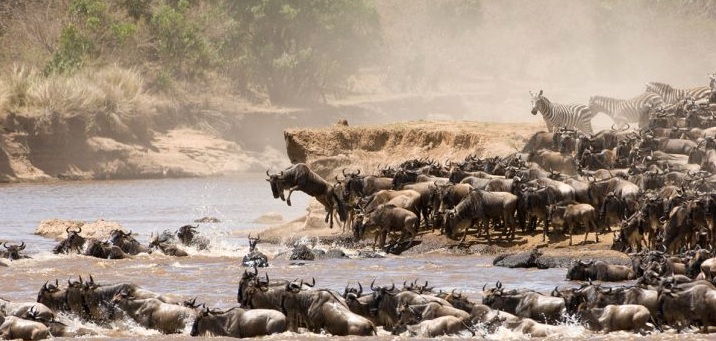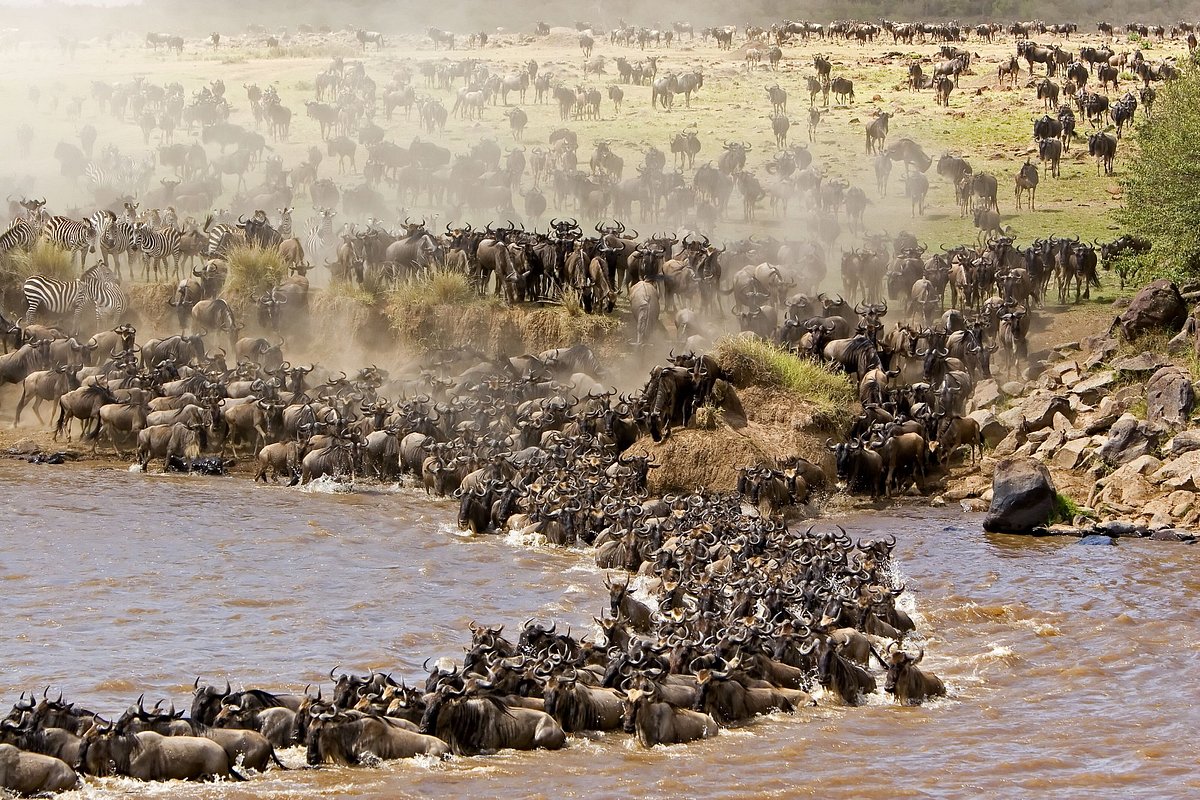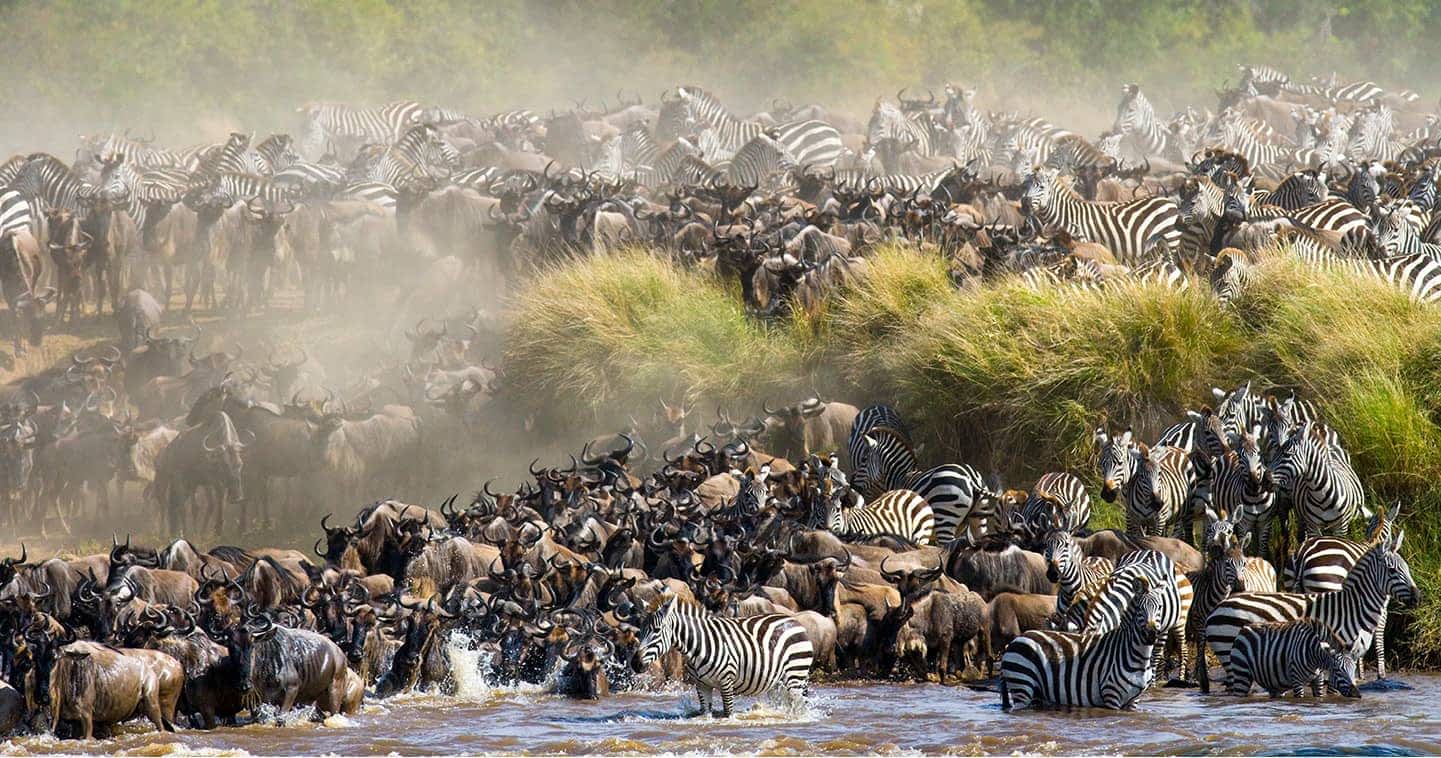The Great Mara River, flowing through the mesmerizing landscape of Masai Mara National Reserve in Kenya, is a natural wonder that captivates both nature enthusiasts and wildlife aficionados alike. Spanning approximately 395 kilometers, this iconic river serves as a crucial lifeline for the abundant flora and fauna that call the region home. Its significance lies not only in its picturesque beauty but also in the annual wildebeest migration, a breathtaking spectacle that unfolds along its banks. This essay aims to explore the Great Mara River, shedding light on its importance, ecological impact, and the interplay between its inhabitants and the river itself.

-
Historical Significance
The Great Mara River holds immense historical significance as it has been an integral part of the Masai Mara ecosystem for centuries. For the indigenous Maasai people, the river has been a source of water, sustenance, and spiritual nourishment. Its name, Mara, derives from the Maasai word “Mara,” meaning “mottled,” a reflection of the river’s changing colors and patterns throughout the year.
-
Ecological Importance
The river’s ecological importance cannot be overstated. It provides a vital water source for the diverse wildlife population, supporting an intricate web of life in Masai Mara. Large herbivores such as elephants, buffalo, and antelope depend on the Mara River for drinking and bathing. The river’s lush banks offer fertile grazing grounds for various herbivorous species, ensuring their survival.
Moreover, the Great Mara River is home to a plethora of aquatic life, including Nile crocodiles and hippopotamuses. These apex predators play a crucial role in maintaining the river’s ecosystem balance. The crocodiles’ presence influences the behavior and distribution of herbivores, while the hippos’ grazing activities promote plant diversity along the riverbanks.

The annual wildebeest migration is an awe-inspiring natural phenomenon that epitomizes the significance of the Great Mara River. Every year, over two million wildebeest, zebras, and gazelles embark on a treacherous journey across the Serengeti plains in Tanzania, guided by an instinctual call towards greener pastures in Masai Mara. The Mara River serves as a formidable obstacle during this migration, fraught with peril.
As the migrating herds reach the river, they face a daunting challenge—crossing the rushing waters and evading the lurking crocodiles. The spectacle of thousands of wildebeest plunging into the river, braving the currents and predators, is both heart-stopping and mesmerizing. The struggle for survival unfolds as some make it across unscathed, while others fall prey to the jaws of the crocodiles or succumb to the river’s force.

The river crossing is a test of stamina, agility, and adaptability for the migrating herds. It is not only a matter of survival but also a crucial stage in the natural cycle of the ecosystem. The wildebeest grazing stimulates new growth along the riverbanks, while their droppings fertilize the land, creating a harmonious symbiosis between the river and the wildlife.
Best place to see the Wildebeest Migration
Watch the Wildebeest Migration on our YouTube Channel
Conclusion
The Great Mara River is a testament to the intricate relationship between nature and wildlife. Its historical significance, ecological importance, and role in the annual wildebeest migration make it a captivating natural phenomenon. The river serves as a lifeline, sustaining a diverse ecosystem that thrives along its banks. Preserving the integrity of this extraordinary river is not only crucial for the inhabitants of Masai Mara but also a testament to our commitment to safeguarding our planet’s natural wonders for future generations to cherish and marvel at.
Book a combined Safari for Gorilla Trekking and Wildebeest Migration







